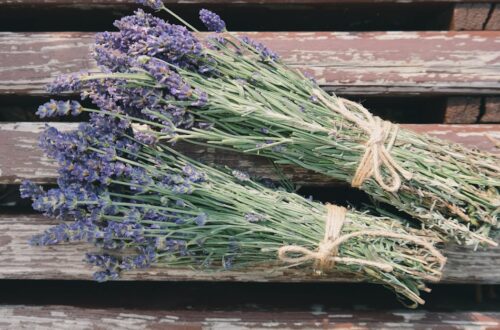If you’re looking to enhance your culinary experience or boost your garden’s productivity, growing parsley from seed is an essential skill to master. This aromatic herb, valued for its versatility and health benefits, thrives in various conditions, making it a favorite among gardeners. In this complete guide, we will explore the step-by-step process and best practices for successfully growing parsley from seed, ensuring a bountiful harvest that will elevate your dishes and delight your taste buds.
Understanding Parsley Seeds
Parsley seeds are the foundation of cultivating this versatile herb, commonly used in cooking and garnishes. There are two primary types: curly parsley, known for its ruffled leaves, and flat-leaf parsley, favored by professional chefs for its robust flavor. Both varieties are rich in vitamins A, C, and K, providing significant health benefits. While planting, ensure you use fresh seeds for higher germination rates, ideally by growing parsley from seed in well-draining soil and a sunny location. This not only enhances growth but also maximizes flavor. Explore the myriad uses of parsley in both culinary and medicinal applications, making it a must-have in any garden or kitchen.
Types of Parsley and Their Characteristics
The main types of parsley include curly parsley, characterized by its tightly curled leaves, and flat-leaf parsley, known for its strong flavor and versatility in cooking. Curly parsley is often used as a garnish, while flat-leaf is preferred for its culinary applications.
Nutritional Benefits of Parsley
Rich in essential vitamins and antioxidants, parsley supports immune health and provides anti-inflammatory benefits. One serving offers significant amounts of vitamin K, which is crucial for bone health and metabolism.

Preparing to Grow Parsley
Before starting your journey in growing parsley from seed, it’s essential to pay careful attention to seed selection. Opt for high-quality seeds from trusted sources, as this ensures a better rate of germination and healthier plants. Next, choosing an appropriate location is crucial. Parsley thrives in well-drained soil that receives full sun or partial shade. Ideal temperatures range between 60°F to 70°F (15°C to 21°C), so consider starting your seeds indoors or directly in the garden when conditions are favorable. Remember, proper planning will set the foundation for a thriving herb garden!
Choosing the Right Seeds
Select high-quality, organic parsley seeds for optimal growth. Opt for flat-leaf or curly varieties based on your culinary needs.
Selecting an Appropriate Location
Ensure the location offers well-drained soil and adequate sunlight to support parsley growth.

Planting Parsley Seeds
To successfully plant parsley seeds, timing is essential. Start by sowing your seeds indoors 6 to 8 weeks before the last frost date or directly in the garden once soil temperatures reach around 70°F. This approach ensures optimal germination conditions, allowing your parsley to flourish throughout the growing season. Remember, parsley is a biennial herb, thriving in cooler weather, making fall planting a viable option as well.
Additionally, consider your soil requirements. Parsley prefers rich, well-draining soil with a pH level of 6.0 to 7.0. Incorporating organic matter, such as compost, enhances nutrient availability and promotes robust growth. By paying attention to these factors, you can effectively cultivate parsley, beginning with the crucial step of planting seeds, including growing parsley from seed in optimal conditions.
Timing Your Planting
Sow seeds indoors 6-8 weeks before the last frost or directly in the garden when soil is around 70°F.
Soil Requirements for Parsley
Use rich, well-draining soil with a pH of 6.0-7.0, enhancing it with compost for better growth.

Caring for Your Parsley Plants
Proper care is essential for robust parsley growth. Watering should be consistent, ensuring that the soil is moist but not waterlogged. Parsley thrives with about one inch of water a week, especially during dry spells. Fertilization is crucial; using a balanced fertilizer every 4-6 weeks will promote vigorous growth. Additionally, for those interested in growing parsley from seed, knowing its nutrient needs is vital.
Sunlight is equally important. Parsley prefers 6-8 hours of direct sunlight daily. However, in hotter climates, a little afternoon shade can help it flourish. Maintain a temperature range between 60°F to 70°F for optimal growth. This careful balance of watering, fertilization, and sunlight will ensure your parsley plants thrive, yielding bountiful greens for your culinary needs.
Watering and Fertilization Needs
Water regularly to keep soil moist; use balanced fertilizer every 4-6 weeks.
Sunlight and Temperature Requirements
Provide 6-8 hours of sunlight; ideal temperature is 60°F to 70°F.

Common Pests and Diseases
Parsley, while hardy, can attract a variety of pests and diseases that threaten its growth. Common culprits include aphids, whiteflies, and fungal infections such as downy mildew. Recognizing these problems early is crucial for maintaining a healthy garden. Signs of infestations often manifest as wilting leaves or a sticky residue on foliage. Regularly inspecting your parsley plants will help identify issues before they escalate.
Identifying Common Issues
Keep an eye out for discolored leaves or a sudden drop in growth, which can indicate pest presence. Aphids are particularly troublesome and can be spotted clustering on stems or undersides of leaves. Additionally, fuzzy white patches may suggest the presence of powdery mildew.
Organic Solutions to Prevent Infestations
Utilizing natural remedies helps in combating these pests. Introducing beneficial insects, like ladybugs, can effectively control aphid populations. Homemade sprays made from diluted dish soap or neem oil provide excellent organic solutions to deter unwanted visitors without harming your plants.

Harvesting Parsley
Harvesting parsley is essential for maximizing flavor and yield. The optimal time to harvest is when the leaves are vibrant and lush, typically around 70-90 days after planting. For best results, cut the outer leaves, allowing the inner ones to mature. Keep an eye on the plant’s growth; once you notice the first flower buds, it’s a signal to expedite your harvesting process. Remember, continuous harvesting encourages the plant to produce more leaves, enhancing your cooking experience. Embrace these elements to cultivate parsley efficiently!
When to Harvest Parsley
Parsley can be harvested once it reaches about 6-8 inches in height. This is usually within 70-90 days after sowing seeds, but always check for robust leaf growth and avoid waiting too long to maintain flavor.
Best Practices for Harvesting
Use sharp scissors to snip off the stems, taking care to cut just above a leaf node. This method helps in promoting bushier growth. Harvest in the morning for the best flavor.

Utilizing Your Parsley Harvest
Once you’ve cultivated your parsley, knowing how to maximize its potential is key. Fresh parsley is renowned for its versatility in culinary dishes, enhancing flavors in salads, soups, and sauces. Moreover, its rich nutrient profile, including vitamins A, C, and K, makes it a healthful addition to meals. When properly harvested, use the leaves fresh or consider making pesto, marinades, or seasoning blends. To maintain freshness, parsley can be preserved by freezing, where either whole sprigs or chopped leaves can be stored. For the best results, avoid washing before freezing to extend shelf-life. With these methods, you can enjoy parsley’s vibrant flavor and health benefits long after your initial growing parsley from seed process.
Culinary Uses of Parsley
Fresh parsley is a staple in kitchens worldwide, used to elevate dishes with its fresh flavor. It’s perfect in salads, soups, and as a garnish on numerous meals.
Storing Parsley for Long-Term Use
For long-term storage, consider freezing parsley. Simply chop leaves, place them in ice cube trays with water, and store in the freezer for easy use later.

Conclusion
In conclusion, growing parsley from seed can be a rewarding endeavor, enriching both your garden and your kitchen. With the right techniques and care, you can cultivate parsley that not only enhances your dishes but also thrives in your growing environment. Don’t hesitate to start your gardening journey today and experience the joys of growing parsley from seed.






